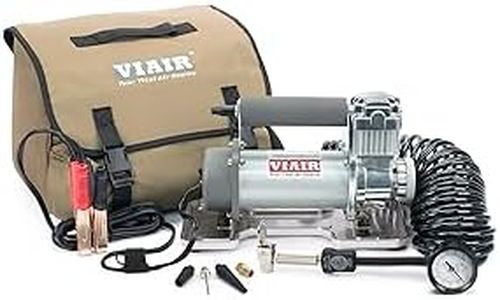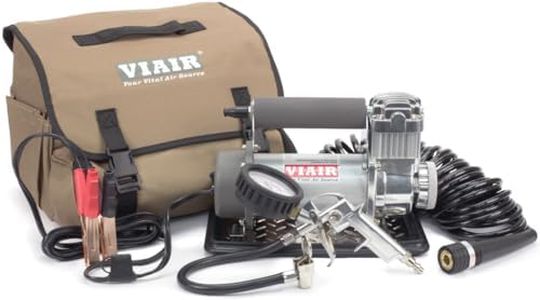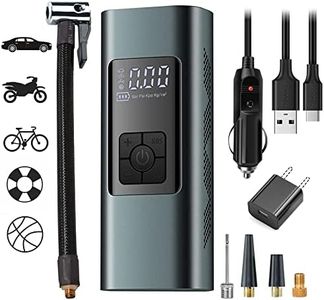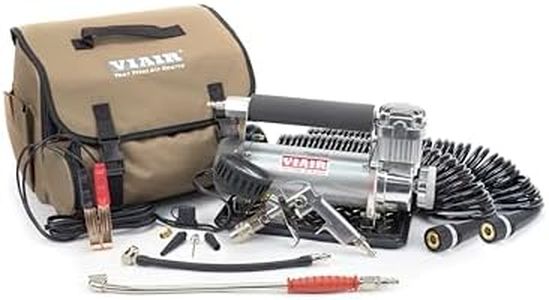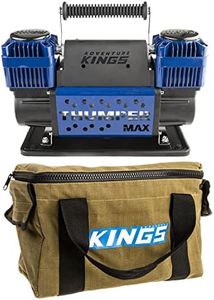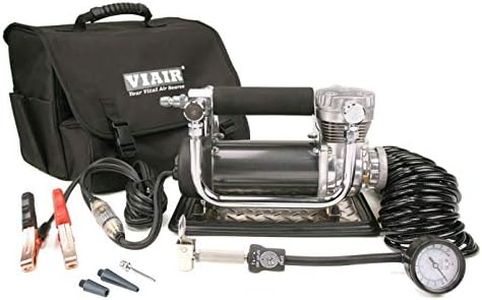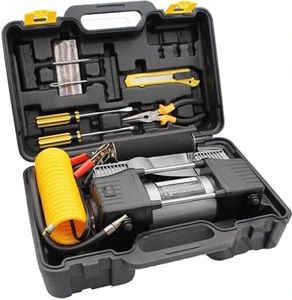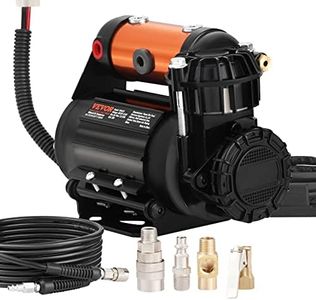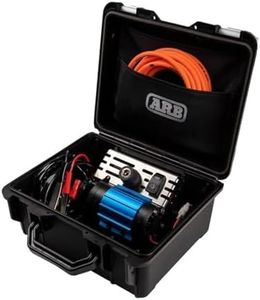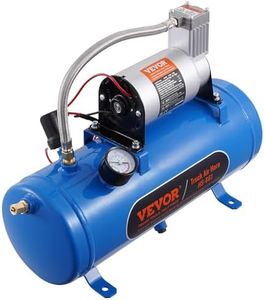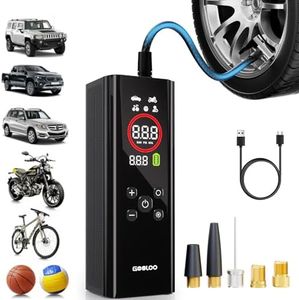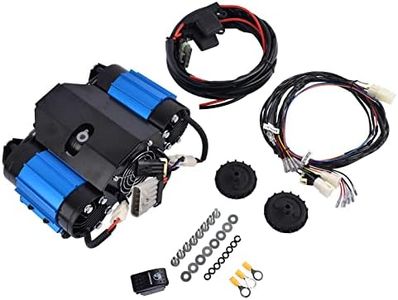We Use CookiesWe use cookies to enhance the security, performance,
functionality and for analytical and promotional activities. By continuing to browse this site you
are agreeing to our privacy policy
10 Best 12 Volt Air Compressors
From leading brands and best sellers available on the web.By clicking on a link to a third party's website, log data is shared with that third party.
Buying Guide for the Best 12 Volt Air Compressors
Choosing a 12-volt air compressor can really make a difference when it comes to inflating tires, sports equipment, or even running small air tools when you're out and about. To make the best choice, think about how and where you plan to use the compressor—like whether you need something portable for emergencies or a more robust unit for frequent, heavier use. Always check the main specifications and match them to your main uses, as 12-volt compressors come in various sizes and capabilities.Maximum Pressure (PSI)Maximum pressure, measured in pounds per square inch (PSI), tells you how much power the compressor can push into what you are inflating. The higher the PSI, the more types of tires or items you can fill. Light use, like bicycle tires or sports gear, often only needs around 100 PSI or less. Standard car tires usually need 30-40 PSI, but having a compressor capable of 120-150 PSI gives you flexibility for bigger tires or faster fills. For occasional car use, something in the middle range works well; for trucks or off-road, look for the higher PSI options.
Air Flow Rate (CFM/LPM)This spec tells you how quickly the compressor can deliver air, often shown as cubic feet per minute (CFM) or liters per minute (LPM). A higher number means faster inflating, which can be a big deal if you're filling large tires or need to inflate several items quickly. For just topping up car tires occasionally, lower airflow works fine. If you expect to use the compressor often or need it for bigger tires, look for a model with a higher airflow.
Duty CycleThe duty cycle is about how long the compressor can run before needing to rest, usually explained as a percentage (like 50%) or as time on/in time off (like 10 minutes on, 10 minutes off). A higher duty cycle means the compressor can run longer without stopping, which is important if you plan on inflating several items in one go. For rare or quick uses, this isn't as important, but for regular, longer jobs, you'll want a higher duty cycle so you don't have to keep waiting for it to cool down.
Portability and SizePortability means how easy it is to carry and store the compressor. Smaller, lighter models are perfect for emergency kits in a car and for people who might need to move the compressor often. Larger units might have more power but can be harder to transport. Think about whether you’ll just keep it in your trunk or need to lug it across a campsite—pick a size and weight that matches how portable you want it.
Power Source and ConnectionsMost 12-volt air compressors use your car’s cigarette lighter or clamp directly to the battery. The type of connection affects ease of use and compatibility with different vehicles. Cigarette lighter plugs are convenient but may have lower power limits, while battery clamps can handle heavier jobs but require you to access the car battery. If you want quick, occasional inflates, a cigarette plug is fine. For bigger, longer jobs, go for a model with battery clamps.
Included AccessoriesSome compressors come with extra items like inflation needles, carrying bags, or integrated lights. Accessories can add convenience, especially if you need to inflate a range of items. If you’re just filling car tires, the basics will do, but if you expect to use your compressor for bikes, balls, and other inflatables, having extra nozzles or a storage bag can be handy.



